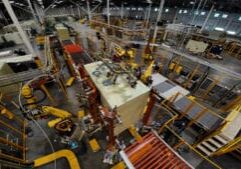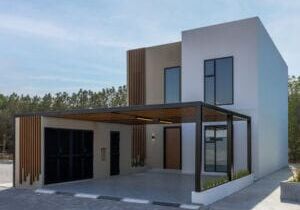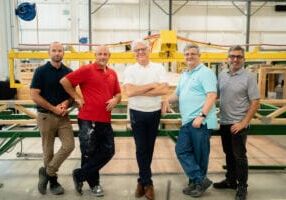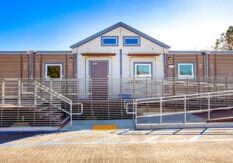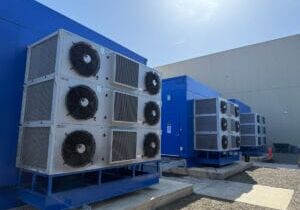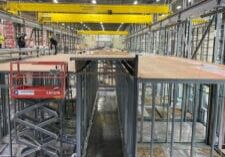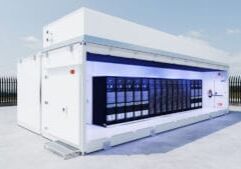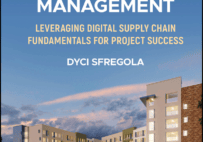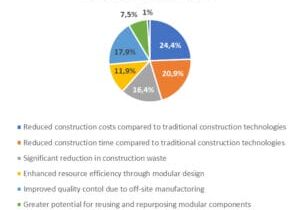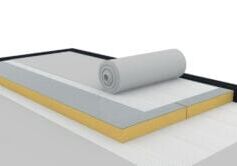DORÇE Navigates Mountainous Terrain, Dangerous Weather to Help Rebuild Türkiye
DORÇE Prefabricated and Construction has been around for over 40 years, focusing on bringing modular constructions to the world at large. The company has worked tirelessly to design and manufacture over hundreds of projects in 60 countries. But all the experience in the world could not match the company’s sudden need for manufacturing speed, as they rushed to fabricate over 40,000 modules in the wake of the 2023 7.8-magnitude and 7.5-magnitude earthquakes that hit Eastern Türkiye.
The February 6 earthquakes in 2023 were enormous, killing thousands of people and wiping out a large number of cities, leaving many citizens without homes. As a result, DORÇE moved quickly, obtaining a government bid to help create housing and multipurpose structures—both temporary and permanent—for earthquake victims and laborers hired for reconstruction efforts.
In a matter of days, DORÇE’s manufacturing facilities in Ankara worked around the clock to build these 22 square meter modules and 90 square meter light gauge steel (LGS) houses to deliver across mountainous regions and areas that were still emerging from the destruction.
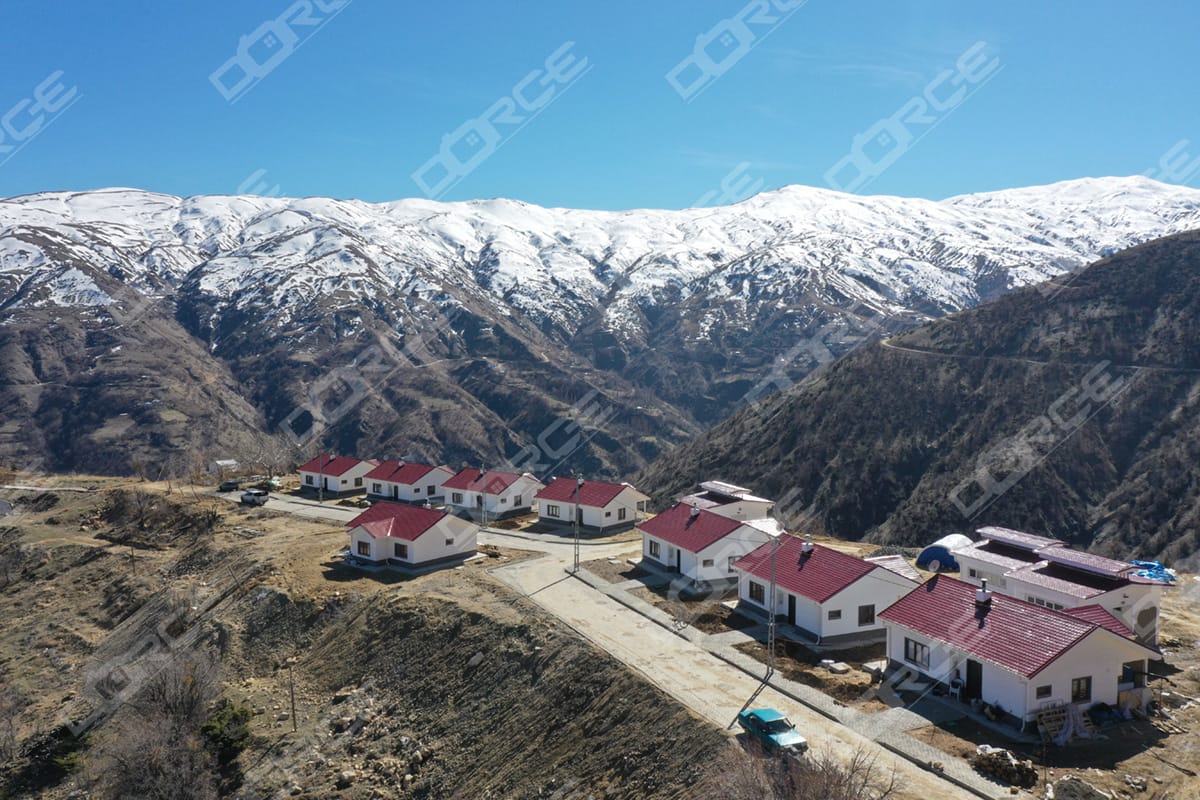
Mobilizing to Manufacture After February 6
DORÇE won the government bid to participate in rebuilding efforts almost immediately after the earthquake, thanks to their experience and expertise as a modular manufacturing company globally in more than 60 countries.
“Our expertise area is focused on mass production or large-scale projects,” said Deputy General Manager Geldimurat Annageldiyev. “We call it CLQ, centralized labor quarters for the oil, gas and mining sector starting from 5,000 up to 120,000 laborers. We provide turnkey solutions for the oil, gas, and mining sector.”
Through the "Village Houses and Barns Project,” DORÇE worked with Turkish housing and disaster management leadership to design structures that could be quickly built and able to withstand both seismic and climate changes. Given the immediate need for housing, DORÇE’s team worked in conjunction with a network of other authorities and subcontractors to collaborate and install these prefab housing units as quickly as possible.

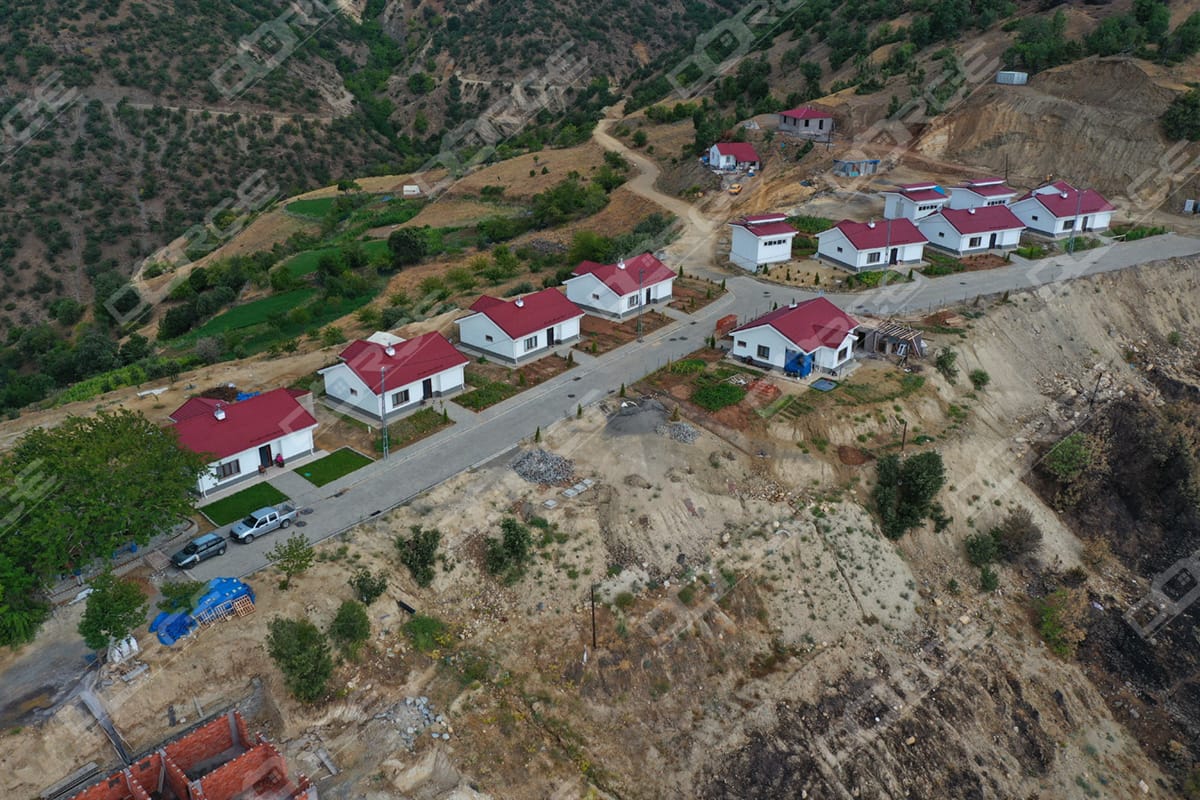
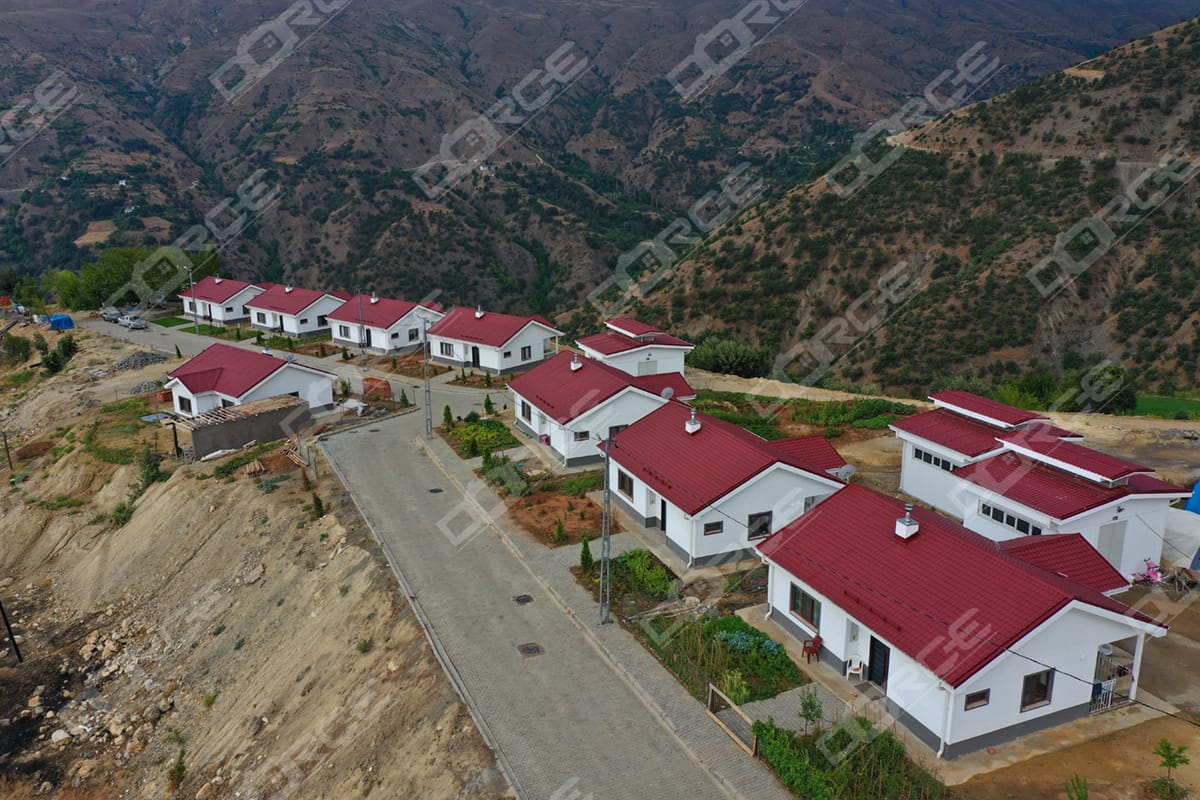
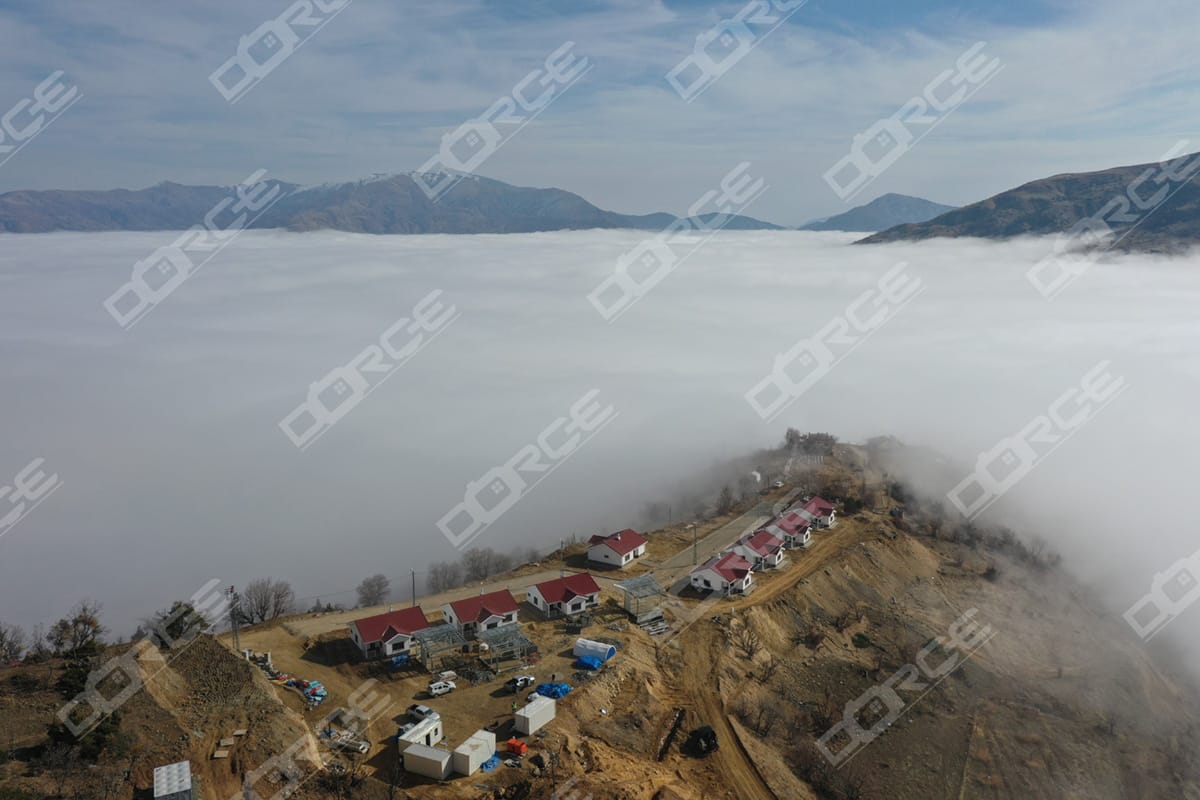
They were responsible for developing the superstructure, said Geldimurat, meaning DORÇE had to work extremely fast to deliver both a design and a physical module. DORÇE put together a design in three days, and immediately sent it off to the factory. The government tapped other companies to help with soil investigation, site service, and installation.
“They awarded contracts to local companies for two reasons,” said Geldimurat. “First of all, they are locals, and they can immediately start actions at the site. And second and most important, to support them because as they are locals, they were the most affected from the disaster area.”
As soon as they were given the go ahead to start, DORÇE’s plant and team stopped all ongoing projects to pivot over to fabrication and delivery. Staff at the manufacturing plant in Ankara were scheduled to work around the clock, requiring back-to-back shift scheduling—three shifts a day, for 24 hours a day, seven days a week.
Related Reading:
Turkish Manufacturer Has Long History of Responding to Disasters
DORCE has a rich history of responding to disasters in the area, almost from its inception in the early 1980s. Due to its proximity to one of the most active earthquake zones in the world, they have invested a lot of time into the design and production of earthquake-resistant modular structures.
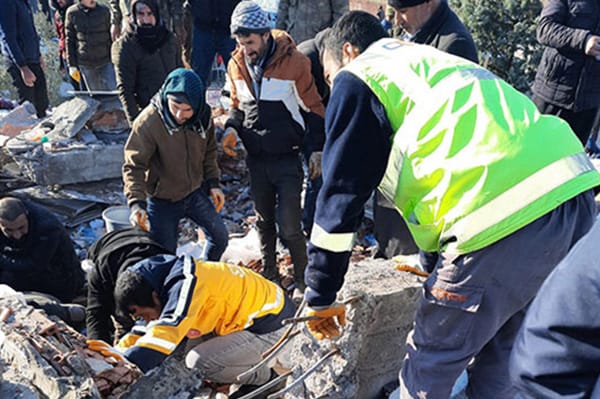
Designing for Quick Delivery and Installation
Given the truncated schedule to prioritize the delivery of modules, DORÇE focused heavily on prefabrication elements that would help avoid any additional installation challenges. For example, each module featured light gauge steel for the frame and the roof; integrated utility pipes to minimize mechanical, electrical, and plumbing work (MEP) work on-site; and traditional drywall.
Even with these weight and time constraints, the modules still had to be as fully furnished as possible for immediate move-in for earthquake victims who were staying in shelters.
According to Business Development Specialist İlyas Gasilov, the design was optimized to maximize factory-based (off-site) manufacturing. To minimize on-site mechanical work, all wall panels were prefabricated with integrated utility pipes. Additionally, considering weather and logistical constraints, the utility lines were also designed to be installed in the suspended ceiling. The in-wall utilities were prefabricated at the factory, and these two manufacturing processes were seamlessly integrated on-site.
Typically, DORÇE has anywhere from 10 to 15 types of mockups for clients to see in person at the factory. The company also made couple of available for the government to inspect and review prior to delivery.
With the light gauge steel and other design elements, DORÇE was able to deliver two plug-and-play modules per truck across high altitude roads quickly to east Türkiye. The first modules arrived on site about ten days after the earthquake. At the peak of the project, DORÇE was manufacturing upwards of 375 modules per day.
“We had up to 180 trucks delivering [modules] from our factory on a daily basis,” said Geldimurat. “I've been in many countries and have visited many factories. So, can you imagine producing 375 modules daily? It's an amazing figure.”
In about four to five months, the company was able to fulfill its original government contract, delivering up to 45,000 modules in all affected cities and around 3,000 permanent village houses across 76 locations in six to seven cities. These modules were used to create 22-square-meter temporary housing units, 90-square-meter permanent housing units, and multipurpose buildings for government and commercial use.
Overall, DORÇE helped communities get back up on their feet by providing buildings for banking, government, temporary housing for NGOs, and more.
Delivering Modules to Eastern Türkiye
As the damage was so widespread across Türkiye, DORÇE delivered modules across mountainous regions and high-altitude areas over 10 hours away from the factory in Ankara.
High winds, winter weather, and overall seismic climatic conditions contributed to the overall construction difficulties and design considerations.
“In normal circumstances when we deliver a product to any location in any part of the world, including Türkiye, of course we take into consideration the earthquake zone, wind load, snow load, and more,” said Geldimurat. “But for this particular earthquake area, even the weather forecast was changing quickly.”
They were also facing infrastructure challenges, as roads needed to be cleared of earthquake debris for delivery. Additionally, major utilities and power systems were affected, which made obtaining on-site power for assembly difficult as well. Once the modules were delivered, assembly was carefully done, as crane and lifting operations were minimized due to strong winds. However, the lightweight design helped with assembly, as the loads were already reduced.
According to İlyas, there were also safety risks that needed to be addressed with regards to concrete pouring because of the locations. In order to mitigate these risks, both standard mixers and “highly maneuverable concrete carriers” were used when building the foundations for these modules.
Unprecedented Disasters Lead to Unprecedented Results for DORÇE
Geldimurat has seen a lot in his 22 years working in modular construction, and particularly with DORÇE. But even with the amount and size of projects he’s worked on, nothing can really compare to the tireless efforts the company put in to manufacture all these modules for earthquake victims, he said. Everyone at DORÇE worked hard to design, manufacture, and deliver these modules—in some cases, even in spite of the personal losses they faced due to the earthquake.
“There are too many projects that have been great accomplishments for all of us,” he said. “But with the earthquake in Turkey, it's not just technical or capacity achievement, you're bringing people a solution. You're bringing people a solution for where to live, where to continue their lives.”
The company is continuing to work with the government in the areas that have been affected, as people continue to acclimate to their new lives more than a year and a half later.
“We are talking about 10 cities affected, and some cities or some districts were completely destroyed,” he said. “But overall, we can say in spite of all of these difficulties, life continues…There are hundreds of thousands of constructions underway, both conventional and different modern methods of construction (MMC). Our main focus was to be there exactly just after the earthquake, and we did that successfully.”
About the Author: Karen P. Rivera is a freelance writer and editor with a passion for storytelling. She is a former United Nations-based reporter, with experience covering international breaking news, venture capital, emerging healthcare tech, and the video game industry.
More From Modular Advantage
Resia: Breaking All the Rules
Resia Manufacturing, a division of U.S.-based Resia, is now offering prefabricated bathroom and kitchen components to industry partners. Its hybrid fabrication facility produces more precise bathroom and kitchen components (modules) faster and at lower cost than traditional construction. Here’s how Resia Manufacturing does it.
How LINQ Modular Innovates to Bring Modular To The Market in the UAE and Beyond
LINQ Modular, with an office and three manufacturing facilities in Dubai, is a modular firm based in United Arab Emirates. The company is on a mission: to break open the housing and construction markets in the Gulf Cooperation Council (GCC) area with modular.
ModMax: Redefining Modular Construction with Confidence and Precision
ModMax was born out of frustration—frustration with five persistent pain points in modular construction: Permitting bottlenecks. Production delays. Rigid designs. Disconnect between “the office” and the field. Lack of transparency and communication.
LifeArk: Disaster-Resilient Housing from Recycled Plastic and 100-year-old Technology
Wee compares LifeArk’s housing units to Yeti coolers, as they are built similarly. Each component takes 15 to 20 minutes to manufacture, has an R-value of 40, and includes molded slots and chases for wiring, plumbing, fire sprinklers, and other utilities.
Building the Future of Modular Edge Infrastructure
The edge data center market is expanding rapidly, driven by the surge in AI workloads, IoT adoption, and the need for localized compute power. In these environments, sustainability, scalability, and reliability are non-negotiable. Cooling is among the most complex challenges for operators—and one of the most decisive factors in long-term success.
Accelerating Light-Gauge Steel Construction: A Semi-Automated Digital Workflow for Off-Site Projects
For construction professionals, the message is clear. By adopting semi-automation and digitalization, companies can deliver projects faster, more accurately, and more profitably, while also building stronger collaboration across teams. The approach is not about replacing people with machines, but about empowering people with better tools and processes.
Why Modular Data Centers Are Gaining Momentum
Artificial intelligence, high-performance computing, and edge applications push the limits of traditional “stick-built” data centers. They take years build, often struggle with high density workloads, and aren’t optimized for deployments near end users. Modular data center platforms are purpose-built to address these challenges, offering flexibility and scalability to adapt to evolving technologies, while opening new opportunities for the modular construction industry.
Supply Chain Innovation in Action: 5 Habits Every Modular Leader Should Practice
By applying these principles to supply chain practices — collaborative planning, strategic procurement, scenario modeling, digital tools, and transparent forecasting — construction leaders can build value chains that are not just efficient and agile, but truly innovative.
Exploring the Role of Modular Integrated Construction (MiC) in Advancing Circular City Principles – A Survey of Stakeholder Perspectives
The survey findings highlight the significant potential of Modular integrated Construction (MiC) in advancing the development of circular cities. By reducing costs, accelerating construction timelines, and minimizing waste generation, MiC offers a promising approach to sustainable urban development.
The Use of MS POLYMER™-Based Sealants and Adhesives in Modular Building
These products combine flexibility and elastic recovery with excellent adhesion to different substrates and have already shown their usefulness in traditional construction. Now it’s time for them to be put to use in the modular construction industry.

